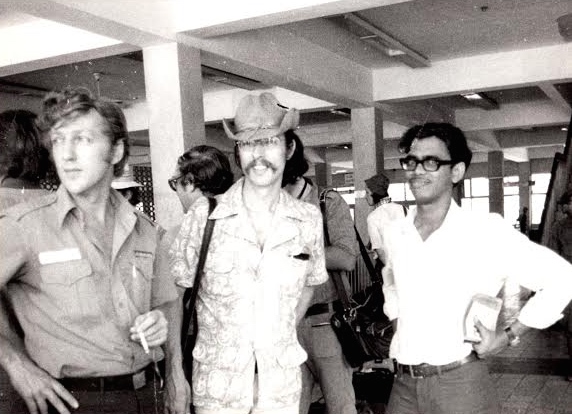People
The fall of Saigon - 40 years on
Wednesday 15 April 2015

Some news stories are so big that they live on and on. The fall of Saigon on 30 April 1975 was one such story. It brought to an end the Vietnam conflict which mesmerised the world from its beginnings in 1945, when it pitted Communist Vietnamese against French colonials, and continued later against the United States.
Two days before the fall, I was flown in from Paris because it was thought my French passport would protect me more than the American and British passports of the other members of the bureau who were helicoptered out the following day. The Communists arrived the day after that. They cut off all communications to the outside world for a week. Sheer luck and a bit of forward planning allowed me to send out the first story after the communications break, and gain a lead of several hours over the rest of the international press.
Reuters’ official history, The Power of News, said I wrote the first story sent out under the new regime.
Ten years later, Reuters asked me to write an “I remember” piece which was again published on the 20th and 25th anniversary and possibly still again later. It began:
PARIS, April xx (Reuters) - Boarding the Air Vietnam flight to Saigon two days before the communists took the city on April 30, 1975 was like entering a world falling apart.
Airline captains are meant to be reassuring but this one needed reassurance.
Walking through the Boeing 727's empty rows to speak to the only four passengers aboard - a Belgian television crew and myself - he was clearly very nervous.
"What do you think will happen? Will the communists take over? What will they do to us?" he asked. We had no answers. We were pretty worried ourselves on the flight from Bangkok to Saigon.
I was only in Saigon for a month, but dozens of famous Reuter names had preceded me in Vietnam, sometimes spending years covering the war.
Two colleagues, Australian Bruce Pigott, 22, and Briton Ron Laramy, 29, had been killed in Saigon on 5 May 1968.
When I arrived, the Saigon office was staffed by bureau chief David Laulicht and correspondent Jeremy Toye. Super fireman Pat Massey had arrived from London to reinforce them.
The war in the field was matched by war in the office. David and Pat were not speaking to each other. Since both were my friends from prior assignments, they used me to pass messages to each other when they absolutely had to communicate. The larger-than-life Pat, my mentor when I began at Reuters, died in 2009.
Other colleagues had been active in the prior weeks, flying in to reinforce from other bureaus. They included Gerry Ratzin from New Delhi, Colin McIntyre and John Roberts from Singapore, and Ronald Batchelor from Sydney.
Neil Davis and Nayan Chanda were hired on the spot as part-time local correspondents. Neil, a kind and brave Australian whose main occupation was as a cameraman, was killed covering a coup attempt in Thailand in 1985.
PHOTO: L-R Neil Davis, Bernard Edinger and Nayan Chanda at Saigon’s Tan Son Nhut airport at the end of May 1975. ■
- « Previous
- Next »
- 333 of 574